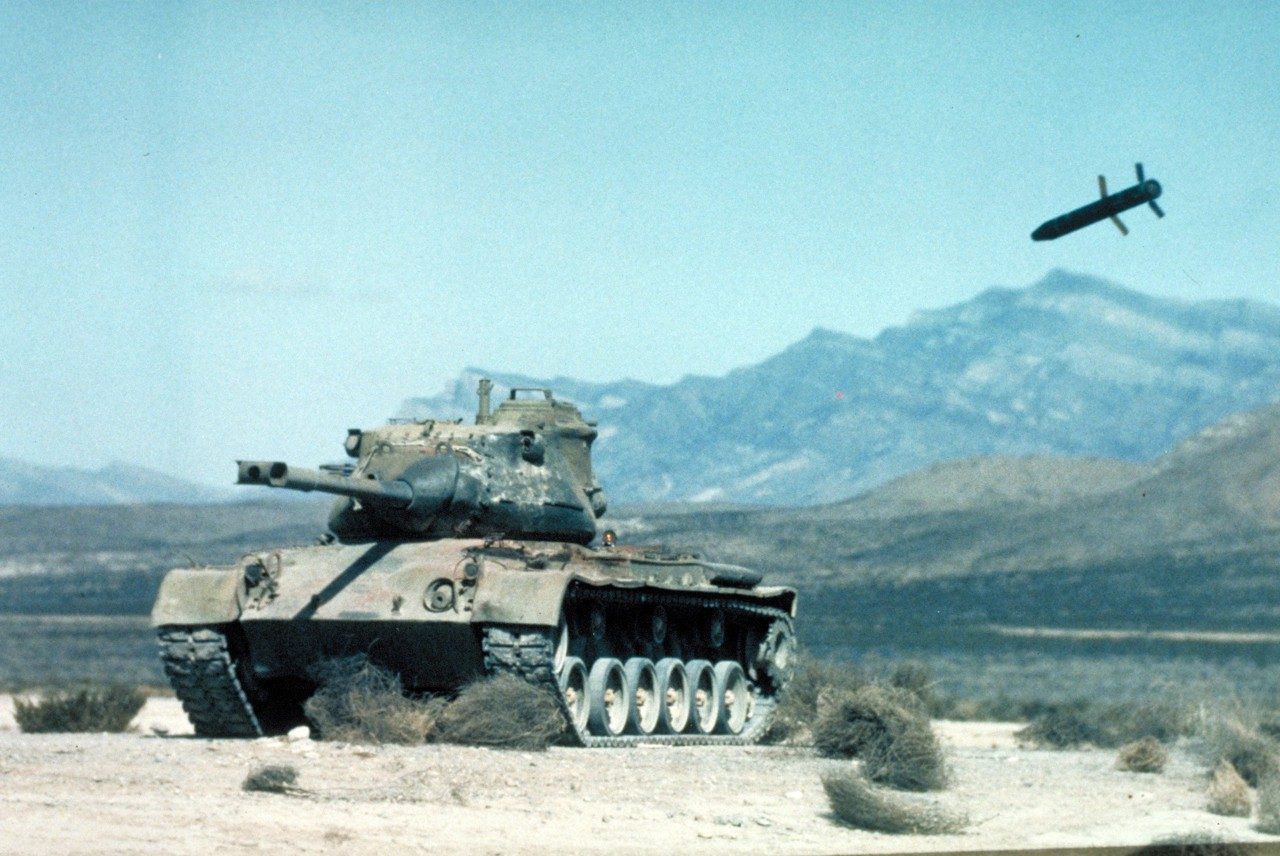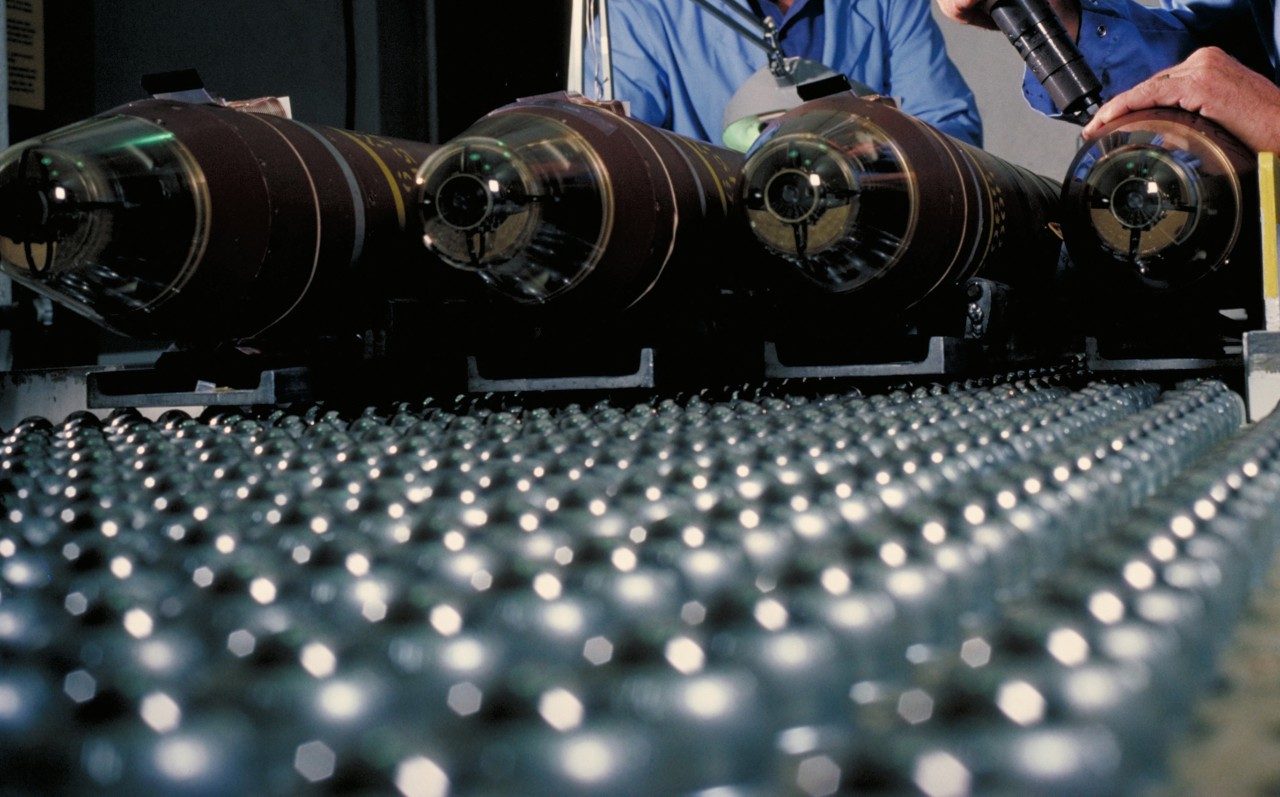On the morning of February 7, 1991, U.S. General Tommy Franks stood before his artillery commanders in a dusty command post along the Iraq-Kuwait border and laid out his directives for the day.
He pointed to a line of forty-foot-tall structures located to the north, observation towers that would be the unit’s primary objective that day. It was the early days of Operation Desert Storm. Intelligence reports had revealed that the towers were being used to direct the planting of land mines around Allied positions.
Franks’ aim was to take out the towers as quickly and accurately as possible. And he believed he had just the weapon to do it—a new laser-guided artillery round, the first cannon-fired “smart” munitions of its kind, called Copperhead.
A little before 3 p.m. that afternoon, a U.S. armored vehicle entered the area and locked on to one of the towers with an invisible laser beam. Satellites in the sky verified its position and relayed the information to a nearby 155-millimeter howitzer cannon.
It fired, releasing a Copperhead that trailed the laser straight to its target, pulverizing the tower into a heap of rubble. Three minutes later, another Copperhead hit its designated mark, crippling the second tower.

The Artillery Revolution
Before the advent of the Copperhead, the use of artillery cannons had remained relatively static for more than five centuries. A target was located. Cannons were lined up. The muzzle was pointed in the general direction of its mark and the gunner fired away, one dozen rounds of ammunition after another, until the target was caught in the deluge.
Throughout the centuries, new cannon munitions offered more power and longer range but rarely greater accuracy. That changed in 1975, when Martin Marietta developed the world’s first cannon-launched guided projectile (GLCP), nicknamed Copperhead.
Using small but incredibly resistant new gyros and computers, Copperheads were able to withstand the extraordinary force of being blasted out of a cannon, a jolt approximately 8,000 times the force of gravity.
Once fired, the Copperheads sprouted small flip-out wings and control fins and glided along the path of the laser, delivering warheads to its target with unrivaled accuracy.
First deployed in Operation Desert Storm, Copperheads were used to destroy tanks, border posts, and strategic facilities throughout Iraq, a devastating artillery attack that proved invaluable in softening defenses before the campaign’s main offensive.

Smarter, Faster, Stronger
Building on the success of the Copperhead, whose production ended in 1990, Martin Marietta turned its attention toward developing the ultimate long-range smart munition for the Navy’s next-generation DDG 1000 Zumwalt-class destroyers.
The 155mm rounds—dubbed Long Range Land Attack Projectiles (LRLAP)—are designed to provide unprecedented support for Marine Corps and Army forces in combat, striking entrenchments, mechanized infantry and land targets from up to seventy-four nautical miles away.
The LRLAP system is capable of firing 10 rounds per minute, each directed toward single or multiple targets via GPS and Inertial Navigation System (INS), making the 155mm LRLAP the most accurate and longest-range guided projectile in U.S. naval history.
Sources and Further Reading
- Court, Darren. White Sands Missile Range. Mount Pleasant, SC: Arcadia Publishing, 2009.
- Franks, Tommy R. American Soldier. New York: HarperCollins, 2005.
- Fredriksen, John C. The United States Army: A Chronology 1775 to the Present. Santa Barbara, CA: ABC-CLIO, 2010.
- Vernon, Alex, Neal Creighton, Jr., and Greg Downey. The Eyes of Orion: Five Tank Lieutenants in the Persian Gulf War. Kent, OH: Kent State University Press, 2001.
- BAE Systems. “155-MM Long-Range Land Attack Projectile (LRLAP),”http://www.baesystems.com/cs/groups/public/documents/document/mdaw/mdqx/~edisp/baes_027605.pdf, accessed 10 September 2012.
- “LRLAP.” http://www.lockheedmartin.com/us/products/lrlap.html, accessed 10 September 2012.
- “Nex-Gen Naval Gunfire Support: The USA’s AGS and LRLAP,” Defense Industry Daily,http://www.defenseindustrydaily.com/Next-Gen-Naval-Gunfire-Support-The-USAs-AGS-LRLAP-07171/, 30 March 2012.




